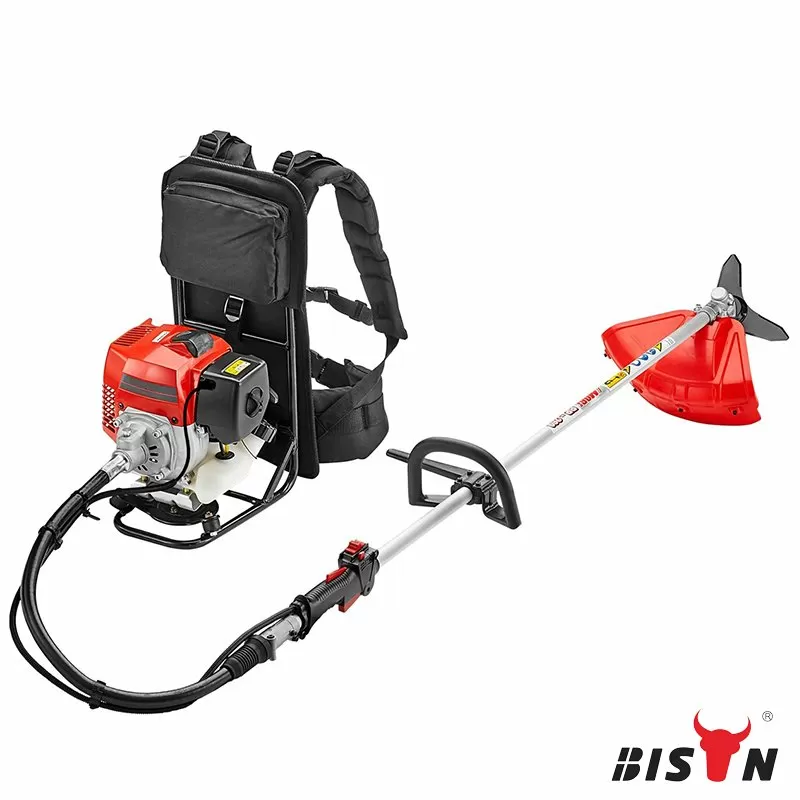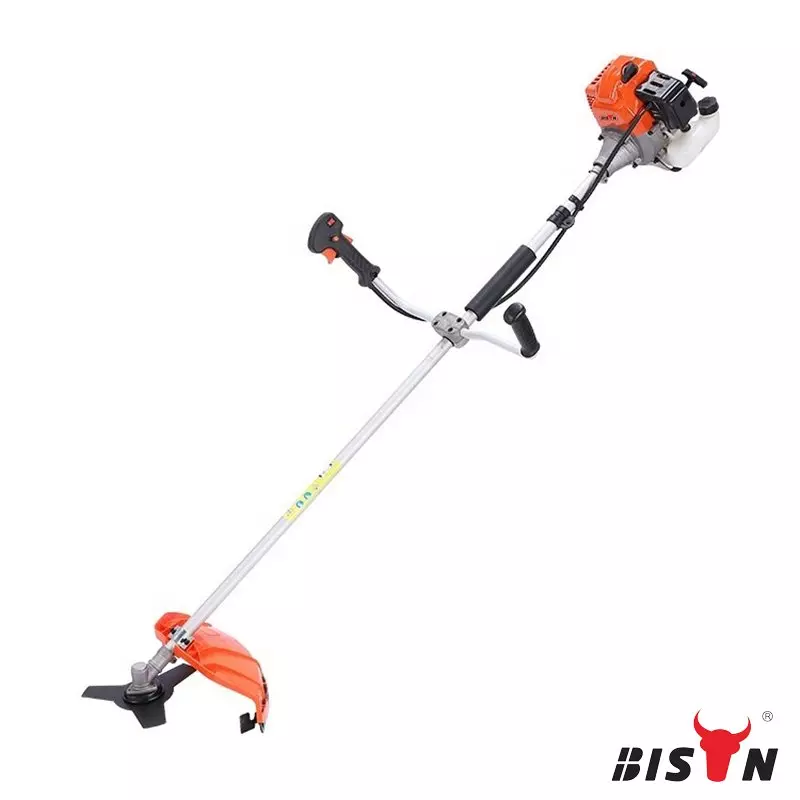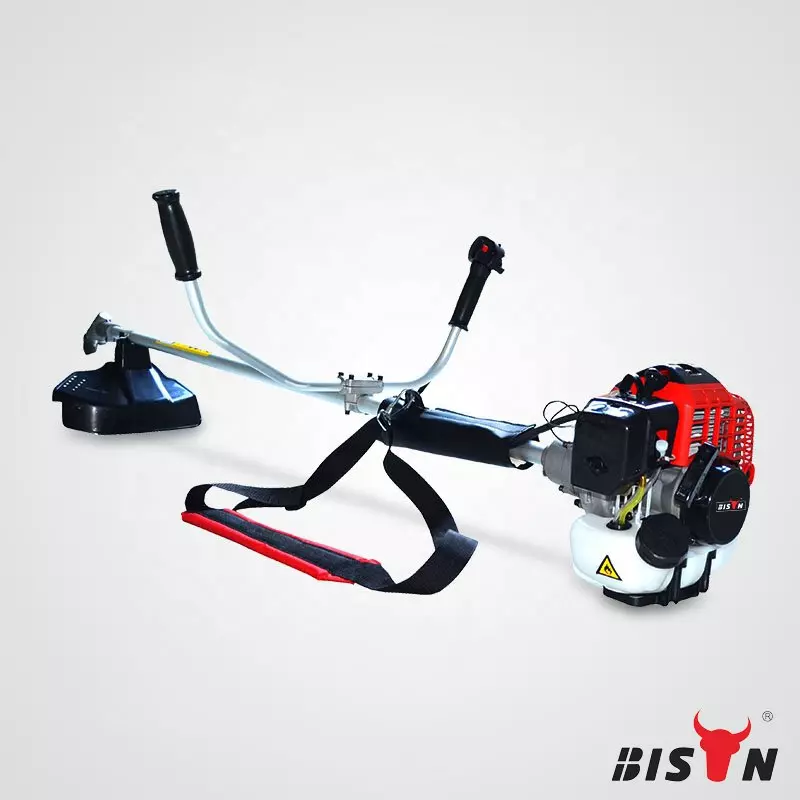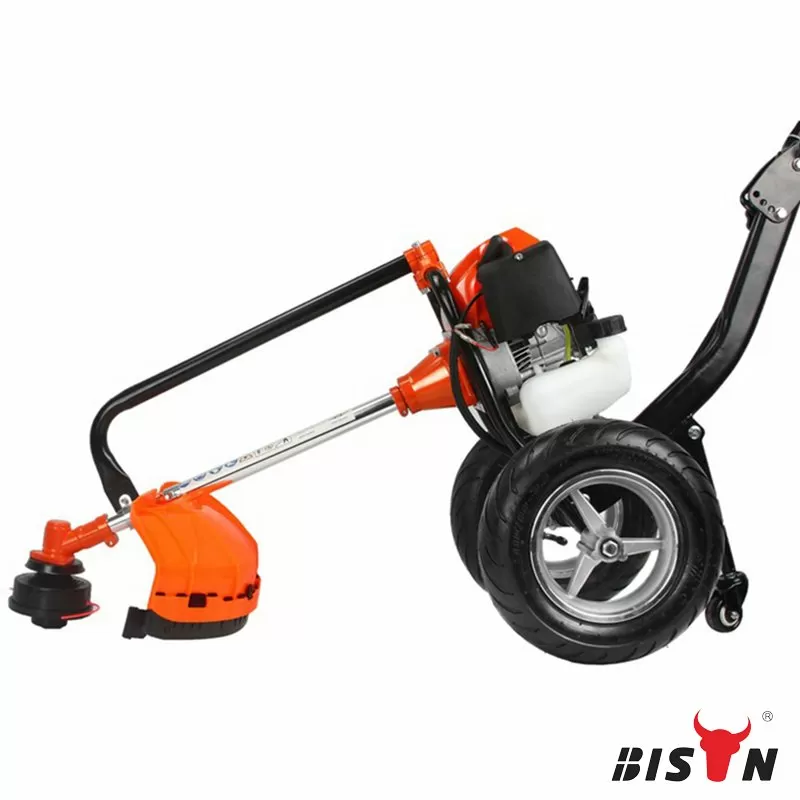how to choose the right string trimmer line?
2024-05-08
Table of content
When it comes to keeping your lawn tidy, a string trimmer (also known as a "weed eater" or "brush cutter") is a workhorse and an indispensable tool for gardeners and landscaping professionals. Depending on the application, people can mow hard-to-reach areas, trim grass and weeds the mower can’t quite reach, and remove thicker brush and edge outlines for a cleaner-looking yard. BISON'll guide you through the string trimmer line and experience helping you choose a line that complements the features of your trimmer model.
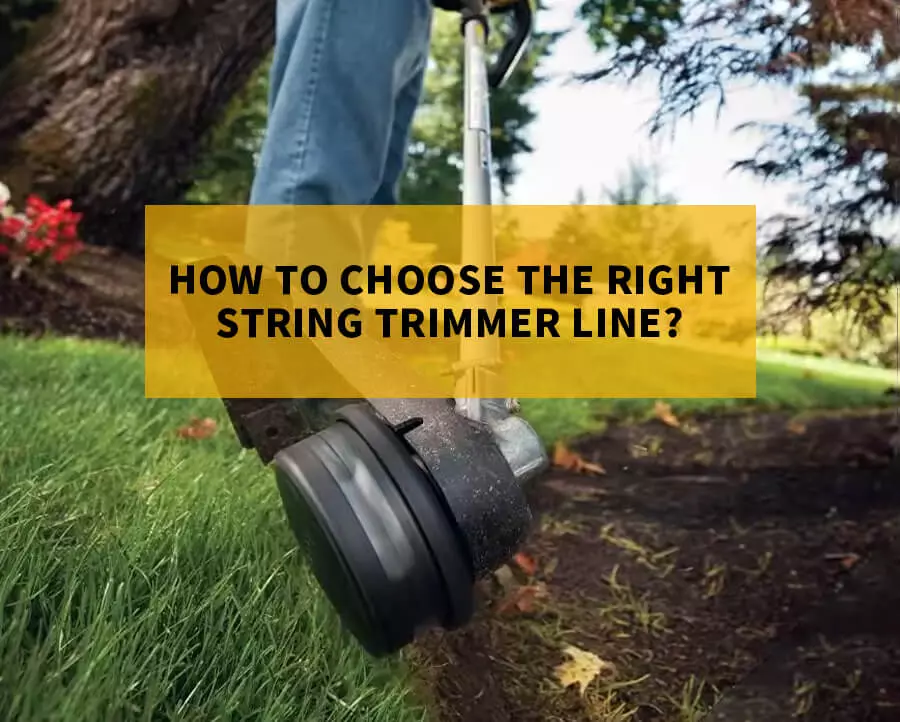
The role of the string trimmer
Generally speaking, string trimmers use a monofilament line to trim grass, weeds, etc. By spinning the line at high speed, the cutting head generates enough centrifugal force to hold the line at a firm horizontal angle. This allows it to cut through most grasses with ease.
The operator manually adjusts the string trimmer’s height and arc, making the trimmer ideal for cutting around trees, walls, fences, and more. Plus, you can turn the string trimmer vertically to use it as an edger against driveways and sidewalks.
The cutting head and the cutting line are switchable on many gasoline models. Check your owner's manual to see what specs your cutting head can handle. Thinner spools, thicker pre-cut lines, square lines, and serrated– the precision of the selection ensures that the motor’s power is properly directed, reducing wear on the equipment and optimizing cutting results.
Understanding string trimmer line dimensions
When one ventures into the field of lawn care, it becomes imperative to understand the critical role of string trimmer string diameter. This diameter is usually measured in inches or millimeters and is directly related to the cutting capabilities and durability of the line.
Finer gauge line allows for clean, high-precision cuts and is lighter, which often means less stress on the trimmer motor.These thin line may break more easily when encountering harder obstacles. And designed for short grass and low-growing plants such as clovers and ray grass.
The 0.085-0.110 range line is strong enough to remove stubborn weeds without sacrificing too much flexibility, limiting the number of line changes or breaks. However, they may still struggle with the most resilient vegetation, potentially damaging sensitive plants or lawns.
0.110 or above thicker line offers superior durability, able to withstand the stress of cutting tough plants and withstand more wear and tear.But, they require a powerful trimmer to use effectively and may not be easy to maneuver, making them unsuitable for delicate trimming tasks.It’s designed for longer grass.
Starting from lines as thin as 0.065 inches, ideal for residential trimming jobs, up to robust 0.110 inches or more for commercial grade work, each size is designed to tackle specific vegetation and lawn care tasks efficiently.
String trimmer lines can be anywhere from 10 to 25 feet in length. However, the optimal length each trimmer model can accommodate varies and is indicated by markings on the guard.
Factors to consider when choosing a string trimmer line
There are several factors to consider choose the right string trimmer line. Meanwhile,BISON recommend consulting your owner's manual.
Type of vegetation and area size to be pruned
The size of your string trimmer line depends on the type of vegetation you want to mow, whether it's weeds or grass. String trimmer lines are available in three weights, light, medium and heavy. For example:
Light task: For routine lawn maintenance, such as trimming grass and light weeds, thinner lines (e.g., 0.065 to 0.070 inches) are usually sufficient.
Medium-sized tasks: For intermediate tasks involving tougher grass and weeds, medium thickness lines (e.g., 0.080 to 0.095 inches) provide the necessary strength without overly taxing the trimmer.
Heavy task: For dense vegetation, bushy areas, or woody plants, a heavy-duty line (0.105 inches and above) is essential for effective cutting.
The bigger your lawn is, the more impact you need from your mower. As mentioned before, powerful string trimmers use thicker string.
String trimmer line shaping
The shape of the line also affects cutting efficiency. String trimmer lines come in various shapes: round, twisted, square, serrated, and star. The round line is the most common type, but it will rip grass rather than cut it because it lacks a cutting edge. Twisted lines are better because the shape has more cutting edges.These trimmer lines often clear thick grass and weeds growing on unused land.
Square or star-shaped string trimmers have sharper edges than round trimmers, cutting through the grass rather than tearing it apart. serrated lines are also an option. It has kitchen knife-like teeth and can “saw” heavier grass with relative ease.
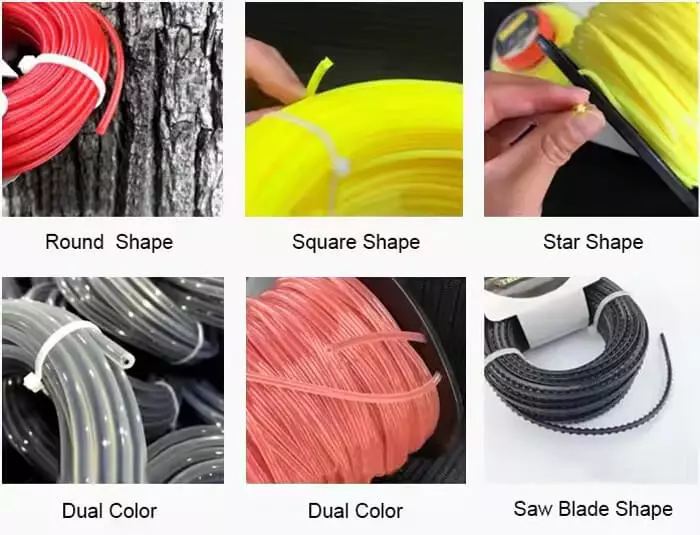
String trimmer line material
Nylon thread is the most common and will wear out and break quickly on heavier jobs. However, manufacturers have introduced a variety of alternatives for heavy-duty work. Some examples include reinforced composite nylon, internally reinforced nylon, and aluminum additions for added strength.
Some stronger cord trimmers can use nylon or even metal blades. All of these options increase the durability of lightweight nylon lines. Still, if most of your mowing efforts focus on light grass trimming, you can use less expensive nylon lines.
Personal preferences and professional experience
Many professional landscapers and lawn care professionals often rely heavily on a specific type of trimming wire that they have been using. it will always be designed for heavy-duty use but may vary in diameter and style.
professionals typically use diameters between 0.080 and 0.105 inches. This is because commercial-grade, thicker wire is more durable and better able to handle the heavy-duty cutting tasks required to tackle larger areas or dense growth. Also helps save time and money.
But size isn't the only difference. Lawn care professionals often use twisted or serrated mowing lines rather than square or rounded ones.
Conclusion
In this article, we explore the variables that come into play when choosing a right string trimmer line. The diameter of the string trimmer line plays a crucial role in matching the trimmer to the trimming environment.
For most homeowners, a round nylon line will suffice for most simple trimming needs, but with the insights you've gained, we hope to find a string trimmer line solution for your needs for different situations. Of course, you can contact us to get product information of BISON trimmer. BISON commitment lies in ensuring you have the best possible experience with our range.we offer personalized consultations,ensuring that any queries you encounter are resolved promptly.
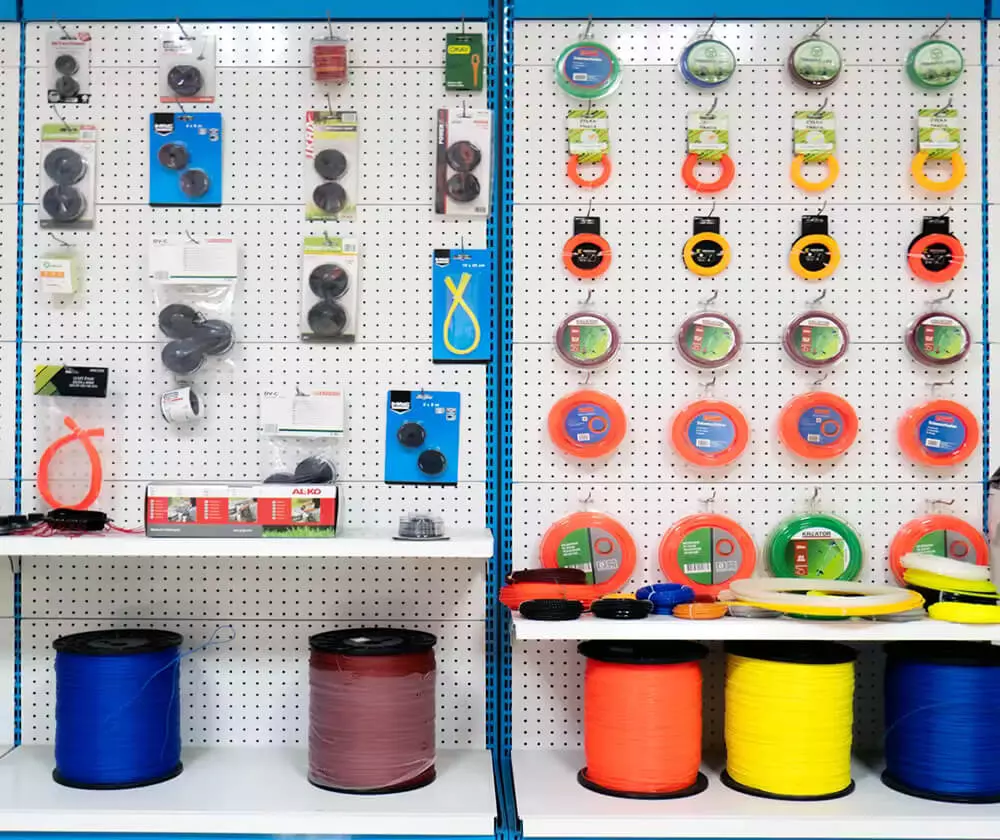
FAQs
How to replace string trimmer line?
A step-by-step guide to replacing lines:
First, cut the trim line to length. Cut 10 feet of the new trim line and remove the cutting head (if removable).
To remove the cutting head, simply unscrew the lug knob and remove the inner wheel and spring.
Hold the trimming wheel firmly and wrap the composite nylon line around it.
Put the parts together and reinstall the trimmer head.
Why do my string trimmer lines keep melting?
Trimmer lines can melt together for several reasons, some of which are: trimming around fences and bricks to create heat. Take frequent breaks and feed the line. Constant trimming creates heat around concrete and asphalt.
how do you get the most out of your trimmmer lines?
Reaching the full potential of your string trimmer requires more than just choosing the right string trimmer line, it requires proficiency in using the string and following maintenance protocols. Here are tips to transform your trimming experience:
Maintain optimal performance of your trimmer by regularly checking for wear, proactively replacing lines before they become excessively worn or broken, and keeping the spool clean and free of debris.
For thinner string trimmer lines, use fast pruning movements. For thicker string trimmer lines, a more cautious and steady pace can effectively cut down hard vegetation.
Opting for a high-quality line of trimmers may come with a higher price tag, but they also bring enhanced durability and superior cutting performance.Choosing a quality range can pay off in the long run.
Always wear appropriate protective equipment during pruning, including goggles, gloves and long pants, and ensure there are no bystanders in the area. It will ensure the safety of you and the trimmer and increase the efficiency of trimming.

